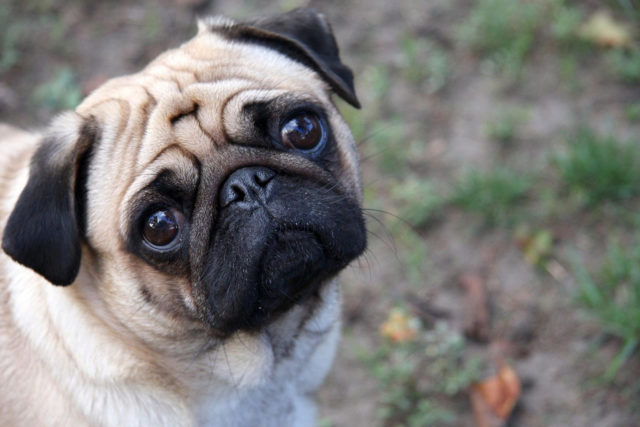Gesundheit! Reverse Sneezing In Dogs
Snorts, yips, growls, and groans—pet dogs make a variety of sounds that can entertain or worry their owner, depending on the circumstance.
 Though owners who have concerns about the health of their pet should always consult a veterinarian, Dr. Lori Teller, an associate professor in the Texas A&M College of Veterinary Medicine & Biomedical Sciences (CVM), weighs in one of the many unusual noises a pet dog can make: reverse sneezing.
Though owners who have concerns about the health of their pet should always consult a veterinarian, Dr. Lori Teller, an associate professor in the Texas A&M College of Veterinary Medicine & Biomedical Sciences (CVM), weighs in one of the many unusual noises a pet dog can make: reverse sneezing.
Also known as inspiratory paroxysmal respiration, reverse sneezing is caused by a muscle spasm at the back of a dog’s mouth where it meets the throat. This spasm, which lasts around 30 seconds, causes a temporary narrowing of the opening of the trachea, making it difficult for the dog to inhale.
“A reverse sneeze is a sudden, involuntary respiratory reflex, but instead of forcefully expelling air out, like a regular sneeze, air is sucked into the nose with a series of rapid, forceful inhalations,” Teller said.
Episodes of reverse sneezing can occur in any breed of dog, but Teller said they seem to be more common in brachycephalic, “smushy-faced,” dog breeds like pugs, Shih Tzus, and Bulldogs.
“A reserve sneeze sounds like a combination of a loud snort, honk, and choking noise,” Teller said. “The dog may stand very still with their front legs and neck extended. The owner will notice their pet’s chest and abdomen rapidly moving in and out.”
While a reverse sneezing episode may be cause for concern for some pet owners, Teller wants owners to know that it is not painful or harmful for your pet.
“People are concerned that their dogs cannot get air and are suffocating or choking to death,” Teller said. “However, it is much scarier to the owner than to the dog,”
If pet owners find their dogs experiencing reverse sneezes, Teller says there are several techniques owners can use to calm their dog and get the episode to stop.
“During an episode, an owner can try speaking in a soothing voice while gently massaging the dog’s throat,” Teller said. “The owner can also gently blow in the dog face to make it swallow or gently open the dog’s mouth and press down on the tongue to alleviate the spasm.”
Occasional episodes of reverse sneezing are normal and are not of concern to the health of the dog, but always consult a veterinarian if your furry friend is experiencing respiratory symptoms that impact their ability to breathe or if reverse sneezing episodes are recurring.
“If your dog has chronic episodes or other respiratory issues, such as coughing, nasal discharge, or difficulty breathing, or just does not seem to feel well, then it’s important to seek veterinary attention to determine if there are other problems going on,” Teller said.
Pet Talk is a service of the College of Veterinary Medicine & Biomedical Sciences, Texas A&M University. Stories can be viewed on the web at vetmed.tamu.edu/news/pet-talk. Suggestions for future topics may be directed to editor@cvm.tamu.edu.


